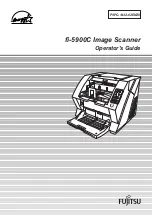
31
A GENERAL GUIDE TO SCANNING
Reception of the frequencies cov-
ered by your scanner is mainly “line-
of-sight.” That means you usually
cannot hear stations that are beyond
the horizon. During the summer
months, you might be able to hear
stations in the 30-50 MHz range lo-
cated several hundred or even thou-
sands of miles away. This is because
of summer atmospheric conditions.
This type of reception is unpredict-
able but often very interesting!
GUIDE TO
FREQUENCIES
National Weather Frequen-
cies
161.650
162.440
162.525
161.775
162.450
162.550
162.400
162.475
163.275
162.425
162.500
Ham Radio Frequencies
Ham operators often transmit emergency
information when other communication
methods break down. The following chart
shows the frequencies that Hams use:
GUIDE TO THE ACTION
BANDS
International Broadcast
Bands
Several shortwave bands are allocat-
ed for international broadcasting be-
cause of the nature of propagation of
high frequencies. The bands are
sometimes identified according to
the approximate wavelength of the
signals in meters.
Wavelength
(meters)
Frequency
(MHz)
10-meter
28.000–29.700
6-meter
50.000–54.000
2-meter
144.000–148.000
70-cm
420.000–450.000
Wavelength
(meters)
Frequency
(MHz)
20-414.fm Page 31 Wednesday, August 4, 1999 11:12 AM













































